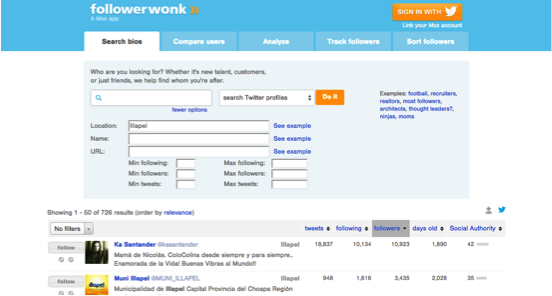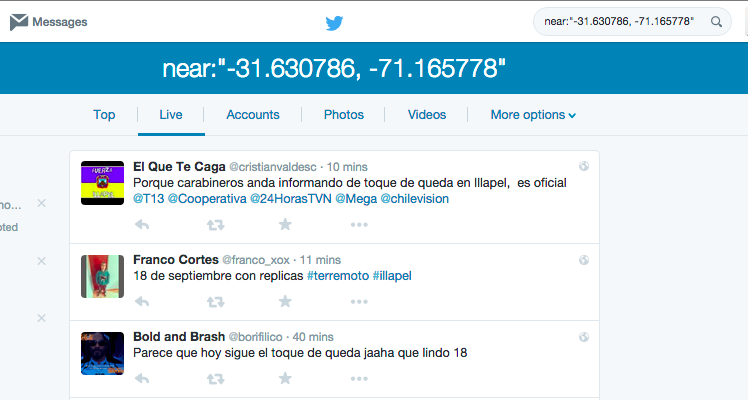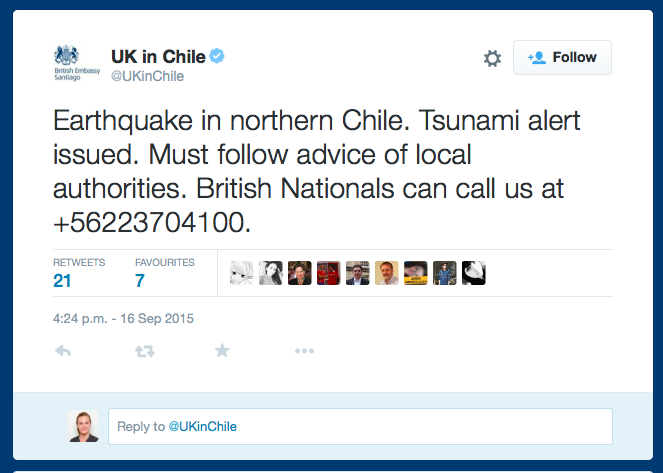Last Wednesday, September 16th, at 7:54pm local time, an 8.3 magnitude earthquake – one of the largest recorded in the country over the last 100 years – struck about 10 miles off the coast of Chile, followed by multiple aftershocks and reports of impending tsunamis around the Pacific Ocean, sending residents fleeing buildings and moving to higher ground.
Immediately, tens of thousands of tweets started appearing on Twitter, those in English using the hashtags #earthquake, #Chile, #ChileEarthquake, #ChileQuake and, later, #tsunami.

Twitter has become the primary channel by which individuals and organisations follow breaking events and news updates, using hashtags to filter tweets around relevant topics. Yet, in the case of a crisis of this magnitude, the amount of information received remains gigantic.
Whether you are an individual seeking essential information, an organisation in the midst of a crisis or a journalist covering a story, you will be looking for up-to-the minute, inclusive and balanced information.
Officials, local reporters, residents, civil society leaders and, in this case, emergency services will provide you with official updates, analysis and testimonies rooted in local context. Having a few people from each of these categories on a single Twitter list is often the best way to keep your finger on the pulse.
An easy option is to search Google for existing Twitter lists created by other people – such as chile-earthquake by CBS News or Emergencias by 24 Horas – and subscribe to it.
Not fully satisfied with those I could find for Chile, I decided to build my own list to monitor not only what was happening but also how the responders handled the situation. It takes a few minutes and here’s how to do it:
Use hashtags. Search Twitter using relevant hashtags and pick users from the “Top” feed as they are likely to be most relevant. A less daunting technique might be to search in Topsy and select influencers.
Note: You don’t need to start following each profile you wish to include in the list. Simply find the ![]() icon next to the ‘Follow’ button, select ‘Add or remove from list’ and tick the appropriate list.
icon next to the ‘Follow’ button, select ‘Add or remove from list’ and tick the appropriate list.

Use locations. When looking for local residents and reporters, Followerwonk helps find pertinent profiles using key words and locations.

Alternatively, search Twitter using latitude and longitude coordinates (coordinates for Illapel and Coquimbo, close to the epicentre, can be found using Google maps).
Be varied. To receive all the information available, it is essential to involve a range of different sources, such as:
- Experts and analysts (seismologists, ciivil engineers, meteorologists)
- Officials (ministries, municipalities)
- NGOs
- Emergency services and disaster alerts channels
- Local residents and local reporters
- National and international media and journlaists
Monitor & Review. Twitter lists can be added as a new Tweetdeck column – or Hootsuite tab – to make it easier to follow.
If the story created is too fast-paced or contains too much irrelevant noise, it is time to strip it from the least interesting accounts.
I thought including tourists’ information channels would add an interesting angle but several hours after the disaster, they had not mentioned the disaster and I decided they were not on top of the news.
Worth a follow, however, is the United Kingdom embassy in Chile who tweet updates and advice in English, for British citizens living in affected areas.

Finally, Earthquake Chile includes 35 profiles. It is not exhaustive, it misses out on some possibly important handles such as ambulance services, that I did not find immediately. Nonetheless, it gives me the information I need.
It is really interesting to follow @onemichile, the official Twitter account for the Interior Ministry Office for Emergency and Public Security, who do an excellent job providing its 925K followers with constant updates as well as multiple links to educational videos and emergency handbooks.
SHOA INDICA QUE LAS CARACTERÍSTICAS DEL SISMO NO REÚNEN LAS CONDICIONES NECESARIAS PARA GENERAR UN TSUNAMI EN LAS COSTAS DE CHILE.
— onemichile (@onemichile) September 17, 2015
Hay muchas cosas para las que nunca vas a estar preparado. Para un terremoto sí. https://t.co/lUyD8gYwJ3 #cálmatepiensaactúa
— onemichile (@onemichile) September 13, 2015
Comité de Operaciones de Emergencia reunido en ONEMI por sismo de mayor intensidad. pic.twitter.com/xluNyfjgEG
— onemichile (@onemichile) September 16, 2015
